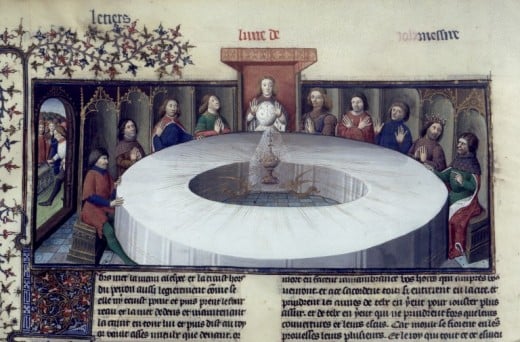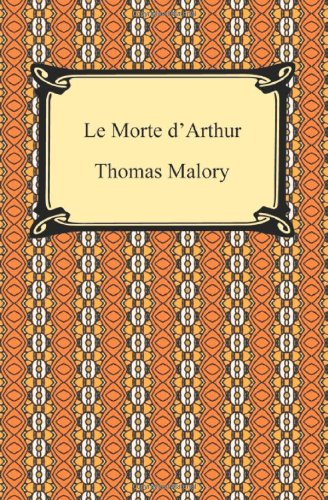The Language of Historicity: What Defines A Good Historical Claim
Criteria Of A Good Historical Claim
Out of four different documents, Gerald of Wales’ description of the discovery of Arthur’s bones, Caxton’s Prologue to Morte Darthur, Edward I’s letter to the pope and the response to Edward’s letter to the pope, it was the discovery of Arthur’s bone that have the most effective historical claim. To have a good historical claim, it must contain primary source(s) as well as empirical evidence(s) that support the claim. The empirical evidence(s) cannot be disproven but the interpretations of that evidence(s) can be different. Out of the three documents, the discovery of Arthur’s bone met these criteria the most

Comparing Text: Caxton’s Prologue to Morte Darthur
The other three papers did not meet all of these criteria. In Caxton’s Prologue to Morte Darthur, the claims are King Arthur is real and is a great Christian man. Caxton’s Prologue is a good argument paper, since it address its opposition directly which shows that the author understand the other side of his argument. “Wherto they answerd, and one in special sayd, that in hym that shold say or thynke that there was neuer suche a kyng callyd Arthur might wel be aretted grete folye and blyndnesse; for he sayd that there were many euydences of the contrarye.”(Caxton’s Prologue 279) The paper talks about all these different sources that support the existence of Arthur. “Fyrst ye may see his sepulture in the monasterye of Glastyngburye. And also in Polycronycon….In the Castel of Douer ye may see Gauwayns skulle and Cradoks mantel; at Wynchester, the Round table; in other places, Launcelottes swerde, and many other thynges.” (Caxton’s Prologue 280) It is undeniable from all these sources that Arthur was a real person. The paper continues to say that there are many records that Arthur has done good deeds. This is where the paper fall shorts. The paper mentions all these different sources but none of these sources go into detail and explains what made Arthur a great person. Caxton’s Prologue does a good job in proving Arthur’s existence but fails to use these primary sources to support its second claim.

Edward I’s Letter To The Pope
While Caxton’s Prologue to Morte Darthur did not use its primary sources to fully support its claims, Letter Sent to the Papal Court of Rome did not use any primary sources. A paper base on “common knowledge” is not a good historical paper. The claim is that Scotland belong to England by reason of “property and of possession.” (Edward’s I 197) Edward proves his claim by telling a chronological history of England that dates back to the Trojan War. “Thus, in the days of Eli and of Samuel and the prophet, after the destruction of the city of Troy, a certain valiant and illustrious man of the Trojan race called Brutus…Again, Arthur, Kin fog the Britons, a prince most renowned, subjected to himself a rebellious Scotland, destroyed almost the whole nation, and afterwards installed as king of Scotland one Angusel by name.” Edward I is using “common knowledge” to convince his audience but how true are these facts is unknown. He is not using any primary documents or any empirical evidences to prove his claim that is why his argument is not that believable. To a person with a different “common knowledge” from Edward I, this paper could be full of lies.
Response To Edward’s Letter To The Pope
The same reason occurs in A Report to Edward I that made its historical claim bad. A Report to Edward I is a responds to Edward’s letter and claim thatScotlandbelong to the Roman Church. While A Report to Edward I makes a convincing arguments about what is wrong with Edward’s letter it fails to proves its own claim thatScotlandbelong to the Roman Church. “Brutus divided between his threes sons the island once called Britain…Andrew which cam from Greece, they were converted to the faith five hundred years before the English became Christians, and from that time, the realm of Scotland, with the king and the realm, were under the lordship of the Roman church without any intermediary, and by it were they defended against all their enemies.” (A Report 199) Like Edward’s letter, this paper fails to use any primary sources to prove its claim. No evidences make this paper very weak.
Gerald of Wales’ Description Of The Discovery Of Arthur’s Bones
While these three documents fails to meet the criteria that I set to determines a good historical claim, Gerald of Wales’ description of the discovery of Arthur’s bones did meet all of these criteria. The paper claims that Arthur was a good king and his death was not magical. The first claim that Arthur was a good king is proven by the records at the famous Abbey at Glastonbury, where Arthur made many donations to the monk. The second claim that his death is not magical is proven when people discover his body at Glastonbury. The reason the body was hidden was to keep the Saxons from discovering it, during Arthur’s time he nearly wiped the Saxons out. This was the reason why the inscription in Arthur’s tomb was concealed. His bone was also examined and it was found that he died from a big wound. Which proves his death was not magical.
All three papers have their own weakness, but it was Wales’ description of the discovery of Arthur’s bones that had the best historical claim. A good historical claim always has some sorts of evidence(s) supporting it andWales’ description of the discovery of Arthur’s bone had many documents and evidence to supports it. Edward’s Letter and A Report to Edward had no evidences at all. It was not believable. Although Caxton’s Prologue to Morte Darthur had good evidences, it did support its arguments completely. Simply mentioning a document without an explanation does not make a good historical claim.











